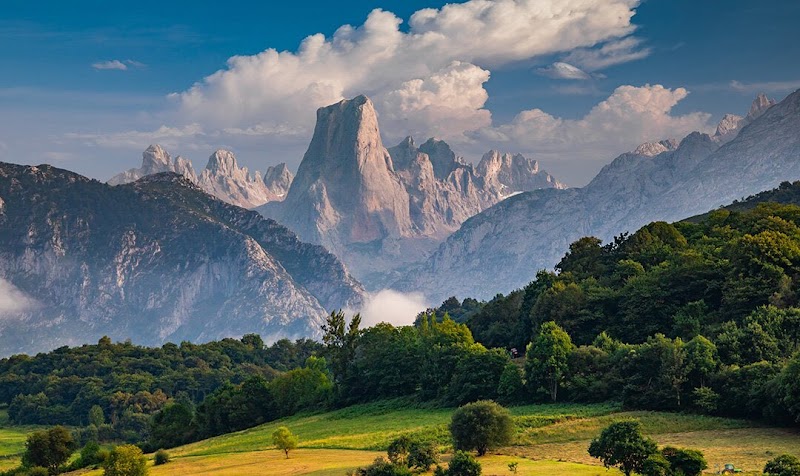
Sierra del Escudo de Cabuérniga Natural Park Adventures
Sierra del Escudo de Cabuérniga Natural Park is a rugged natural area in northern Spain known for its steep limestone ridges, rich biodiversity, and opportunities for hiking and wildlife observation within the Cantabrian Mountains.
About Sierra del Escudo de Cabuérniga Natural Park

The Sierra del Escudo de Cabuérniga Natural Park is located in the autonomous community of Cantabria, northern Spain, forming a natural barrier between the Cantabrian coastal mountains and the interior plateau. This park covers a mountainous area characterized by dramatic escarpments created by limestone and marl formations, rising sharply from the surrounding valleys. The terrain features deep gorges, caves, and karst formations, making it a geological point of interest. Ecologically, the park supports diverse Mediterranean and Euro-Siberian flora, including oak, beech, and holm oak forests, as well as endemic and rare species such as the Cantabrian capercaillie, Iberian wolf, and various raptors. The park has historical significance due to its traditional pastoral activities, which continue in some areas, and traces of ancient settlements scattered throughout the hills. Visitors to the park enjoy hiking along scenic trails that climb to viewpoints offering extensive views of the Cantabrian Sea and inland mountain ranges. Wildlife watching, particularly birding, is another popular activity. Notable landmarks include the high ridge of the Escudo range itself and the nearby river valleys cutting through the landscape. The area is appreciated for its quiet natural beauty, minimal development, and opportunities for immersive outdoor experiences away from urban centers.
Highlights
The prominent limestone escarpment ridge forming panoramic viewpoints across Cantabria.
Diverse bird species including the endangered Cantabrian capercaillie and golden eagle.
Ancient pastoral landscapes where traditional sheep grazing continues.
Remote karst caves and rugged gorges accessible via challenging hiking routes.
Notable Natural Features
Escudo Ridge
A prominent limestone escarpment providing sweeping views over the Cantabrian Sea and inland valleys.
Cueva del Gato
A karst cave system notable for its geological formations and presence of bat colonies.
Cabuérniga Valley Pastures
Traditional grazing lands that support a unique mosaic of open meadows and forest edges, important for biodiversity.
